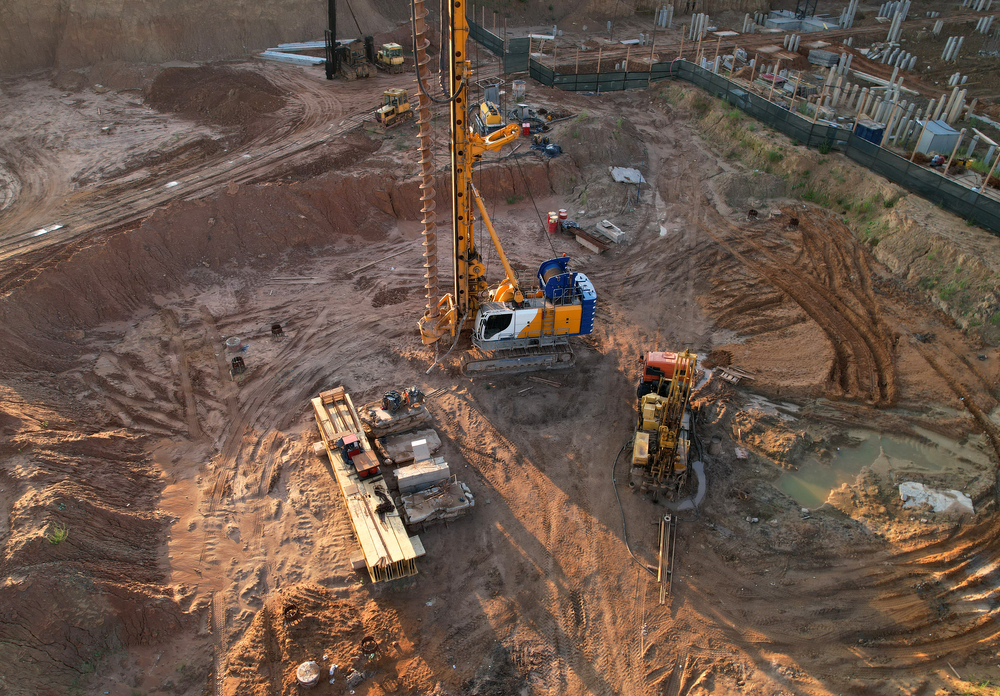The Geotheta Diaries
The Geotheta Diaries
Blog Article
A Biased View of Geotheta
Table of Contents10 Easy Facts About Geotheta ExplainedIndicators on Geotheta You Need To KnowSome Known Incorrect Statements About Geotheta Some Known Incorrect Statements About Geotheta
They team up with civil designers, architectural engineers, architects, and other professionals to integrate geotechnical considerations right into the general job style and construction process. This requires effective synergy, coordination, and communication to make certain that the geotechnical aspects align with the task objectives and fulfill regulative requirements.Mining & Materials Design: Principles of exploration, penetration prices, and factors influencing the selection of boring method. Qualities of dynamites, shooting systems and blast patterns. Blowing up methods in surface area and below ground operations. Special blowing up methods at excavation borders. Resonance and noise control. Mechanical and constant methods to fragmentation, including longwall shearing and fullface boring.
Integrated analysis of fragmentation and comminution procedures. Provided by: Mining & Products Engineering.
How Geotheta can Save You Time, Stress, and Money.
Bachelor's degree programs in civil, geotechnical, geological, and environmental design typically last four years and consist of basic education and learning courses in English, social science, and the humanities, in addition to training courses in innovative mathematics, architectural geology, and liquid mineralogy. (https://www.twitch.tv/geotheta/about)
Geotechnical design entails the evaluation of the dirt and rock conditions at a specific site, and their ramifications for the advancement of that site. As many structures depend on the ground for support, it lacks shock that an in-depth understanding of the ground problems, and the viability of structure systems, are crucial to the long-lasting stability and efficiency of the building or framework.
Being experts in the examination of geological developments and ground practices, geotechnical engineers execute scientific investigations and testing to recognize the effect these geological developments may carry the layout and construction of structure, civil and framework jobs. This experience is essential for the style and building of structures, roads, tunnels, dams, bridges, and water system and sewer system.
The geotechnical team at Douglas Allies regularly talk to engineers, layout engineers, programmers, and builders to make suggestions on layout and growth proposals to guarantee that the developed structures are suitably created for the ground problems. For instance, the style of footing systems needs to take into consideration the weight of the structure, the capacity of the ground to sustain that weight with each other with activity tolerances and efficient building.
Fascination About Geotheta
This task is significantly simplified by the usage of our Douglas Map geospatial platform that makes this info readily obtainable in an easy to utilize internet internet browser user interface. A geotechnical designer will guide the drilling of boreholes and test pits to accumulate soil and other examples, and also assess surface functions and ground exposures to develop a geotechnical design of the subsurface problems.
Depending on the project type Find Out More and ground problems encountered, laboratory testing might to name a few points evaluate stamina, compressibility, reactivity and/or leaks in the structure of dirt and rock examples. After this data is accumulated and collated, the results are made use of for a geotechnical version of the site, which is generally offered as areas across the site.

A geotechnical investigation naturally can just analyze the ground conditions at the locations drilled or excavated. Natural variants in soil and rock problems can happen throughout a website and between examination areas. It is therefore excellent method that the geotechnical engineer be kept throughout building of the task to provide on-site confirmation that the ground problems experienced follow the assumptions and suggestions provided in the geotechnical examination report.
The Definitive Guide for Geotheta
Geotechnical designers utilize their thorough expertise of soil and rock to analyze risk and address troubles on diverse framework projectsGeotechnical design is a specialist branch of civil engineering which considers the behavior of earth products and the application of soil and rock mechanics. Consulting Engineer. As a geotechnical engineer, you will examine the physical, mechanical and chemical buildings of soil and rock in order to make foundations, maintaining structures and earthworks
Geotechnical engineering is very closely connected to and overlaps with, both engineering geology and ground design - https://geotheta.blog.ss-blog.jp/2024-08-02?1722614750. It's feasible to be experts in geotechnics or job for a geotechnical firm yet be called an engineering rock hound or a ground engineer. As a geotechnical designer, you'll need to: develop and maintain connections with clients and various other professionals included in the website, throughout each projectmaintain security criteria on website bear in mind price effects when you make recommendationsstudy geological maps and airborne photos from a series of resources and from different time periodsexamine building prepares to see exactly how feasible they are based upon your understanding of the siteinvestigate risks or geological dangers for the sitesearch for eco delicate functions, such as garbage dump start to develop valid and expository ground modelsplan area investigationsdrill and analyse samples of bedrock, dirt, groundwater and additional products monitor other professionals on sitesolve technological problems as they emerge, such as unforeseen structures at drill sitesmonitor conditions throughout and after construction to make certain structures are steady in the short and long termadding data gathered on site to your first researchcreating geotechnical calculations, illustrations, and 2 or three-dimensional computer system versions translating the datamaking recommendations concerning the suggested usage of the website

Report this page